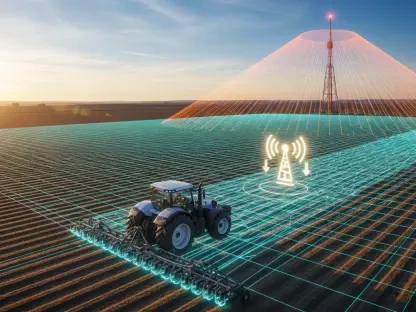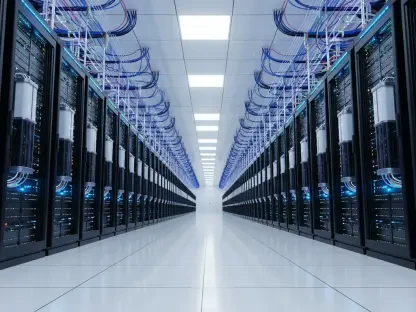In an era where digital connectivity underpins nearly every aspect of daily life, the cities of Fargo, North Dakota, and potentially Moorhead, Minnesota, stand on the brink of a technological revolution with the rollout of fiber optic internet. This advanced infrastructure promises to deliver unprecedented speeds and reliability, far surpassing traditional broadband options that have long constrained both residents and businesses in the region. As two companies, Gateway Fiber and Ubiquity Fiber, spearhead this ambitious project in Fargo with plans that may extend across the river to Moorhead, the implications for economic growth, education, and quality of life are profound. This development isn’t merely an upgrade; it’s a transformative step toward positioning these communities as competitive hubs in a digitally driven world. The journey to full fiber connectivity, however, comes with its share of logistical challenges and strategic nuances, setting the stage for a deeper exploration of what this means for the area.
Accelerating Connectivity with Cutting-Edge Technology
The arrival of fiber optic internet in Fargo marks a significant leap forward in addressing the growing demand for high-speed, low-latency connections that modern applications require. Unlike older copper-based systems, fiber optics transmit data via light, enabling upload and download speeds that can support everything from remote work to streaming high-definition content without interruption. Gateway Fiber and Ubiquity Fiber are set to begin installations in neighborhoods south of 40th Avenue South and west of Interstate 29, targeting a broad rollout over the next three to five years. This extensive timeline reflects the scale of the endeavor, as every residence and business will gain access to connection points, ensuring no corner of the city is left behind. The impact of such connectivity could redefine how local businesses operate, allowing them to compete on a national scale with improved digital tools and communication capabilities that were previously out of reach.
Beyond the technical advantages, the strategic approaches of the two providers highlight a tailored effort to maximize benefits for Fargo’s diverse population. Gateway Fiber operates as a traditional service provider, directly offering internet packages to consumers with a focus on user-friendly access. In contrast, Ubiquity Fiber adopts an open-access model, creating a network that other providers can utilize to deliver services, fostering competition and potentially driving down costs for end users. This dual approach not only ensures widespread coverage but also introduces a layer of choice that empowers residents and businesses to select services best suited to their needs. As this infrastructure takes shape, the potential for innovation—whether through smart city initiatives or enhanced telemedicine—becomes tangible, setting a foundation for long-term growth in a region eager to embrace the digital age.
Navigating Installation Challenges and Community Impact
While the benefits of fiber optic internet are clear, the installation process in Fargo presents notable challenges that require careful management to minimize disruption. Over the coming years, construction will impact sidewalks, streets, and private lawns as crews excavate to lay fiber lines across every parcel in the city. To address these disturbances, the city has mandated that all affected areas, including driveways and green spaces, be restored post-installation. In newer neighborhoods built from the 1970s onward, lines may be placed within public utility easements on private property, often within 10 feet of property lines. Older areas without such easements will see installations in public rights-of-way, typically within 15 feet of curbs. Residents are encouraged to communicate with crews about private installations like underground dog fences or sprinkler systems to prevent unintended damage during this complex rollout.
The community impact of these disruptions extends beyond mere inconvenience, as the process tests the balance between short-term challenges and long-term gains. City officials have taken proactive steps to ease concerns by providing resources such as interactive maps of utility easements and dedicated contact channels for inquiries, ensuring transparency throughout the project. This level of coordination is critical in maintaining public trust, especially as the scale of work could temporarily alter daily routines and local aesthetics. Yet, the promise of enhanced connectivity offers a compelling trade-off, as faster internet could attract new businesses and improve access to online education, ultimately strengthening the social and economic fabric of Fargo. The meticulous planning behind these installations reflects an understanding that community buy-in is essential for the success of such a transformative infrastructure upgrade.
Regional Expansion and Future Prospects
As Fargo embarks on this digital transformation, the potential expansion of fiber optic internet to Moorhead signals a broader regional commitment to advanced connectivity. The Moorhead City Council is poised to decide on an ordinance that would allow Gateway Infrastructure to install and operate a fiber network within public rights-of-way, mirroring the initiative across the river. This development suggests a unified vision for the area, recognizing that high-speed internet is no longer a luxury but a necessity for fostering economic competitiveness and social equity. Should the ordinance pass, Moorhead residents could soon experience the same benefits of reduced latency and robust bandwidth, aligning the twin cities in their pursuit of technological advancement and setting a precedent for other nearby communities to follow suit.
Looking ahead, the successful implementation in Fargo and potentially Moorhead could catalyze further investments in digital infrastructure across the region, creating a ripple effect of innovation and opportunity. The contrasting models of Gateway Fiber and Ubiquity Fiber provide a unique case study in how diverse strategies can coexist to serve a common goal of universal access. This duality not only broadens consumer options but also ensures scalability, as shared networks can adapt to future technological demands. As these projects unfold, they lay the groundwork for smart city applications, from traffic management to energy efficiency, which could redefine urban living in the area. The momentum behind fiber optic adoption underscores a collective understanding that connectivity is a cornerstone of progress, promising to elevate the quality of life for generations to come.
Reflecting on a Digital Milestone
Looking back, the deployment of fiber optic internet in Fargo and the prospective extension to Moorhead stood as a pivotal moment in the region’s technological evolution. The meticulous efforts to install this infrastructure, despite the temporary disruptions to streets and properties, showcased a commitment to bridging the digital divide with lasting benefits. The strategic differences between providers like Gateway Fiber and Ubiquity Fiber highlighted how varied approaches could collectively enhance access and choice for communities. Moving forward, the focus shifted to leveraging this newfound connectivity for economic development, educational advancement, and innovative urban solutions. Stakeholders were encouraged to monitor the progress of regional expansions and advocate for policies that sustained this momentum, ensuring that the digital foundation laid in these cities continued to support growth and inclusivity in an increasingly connected world.









